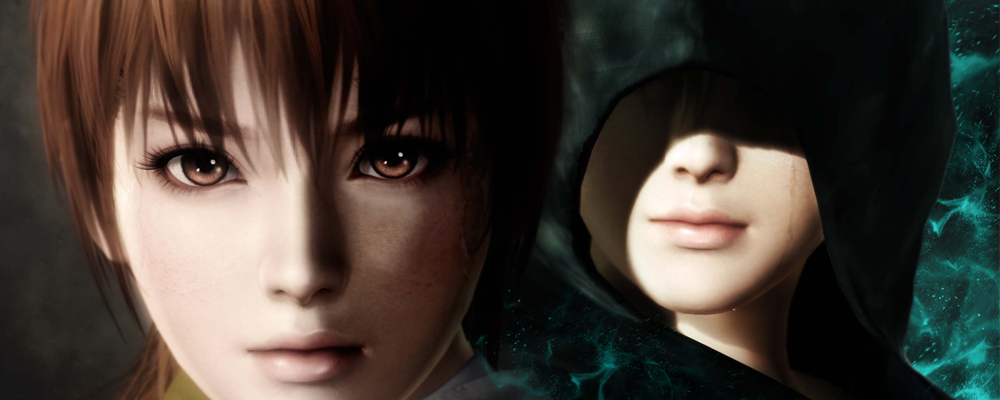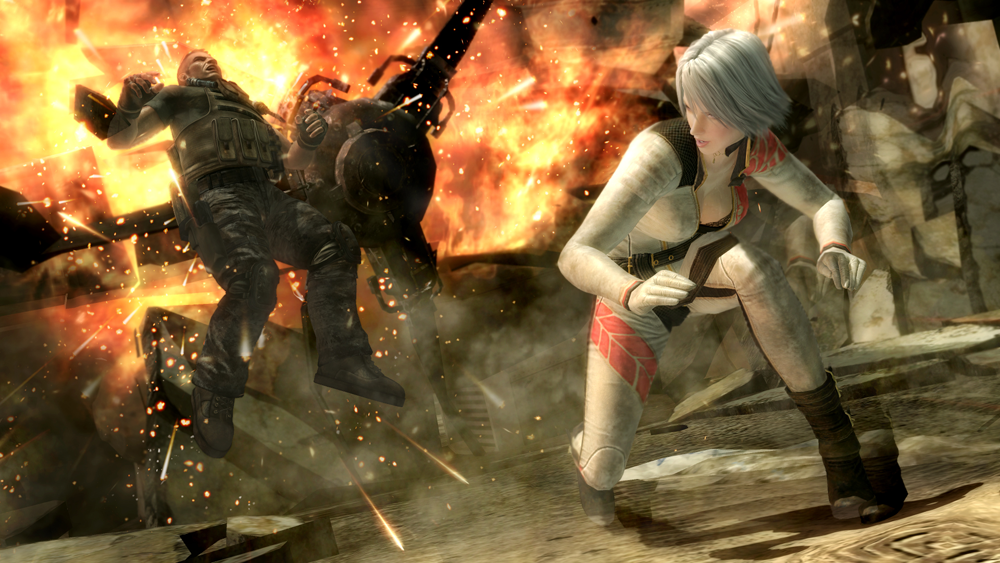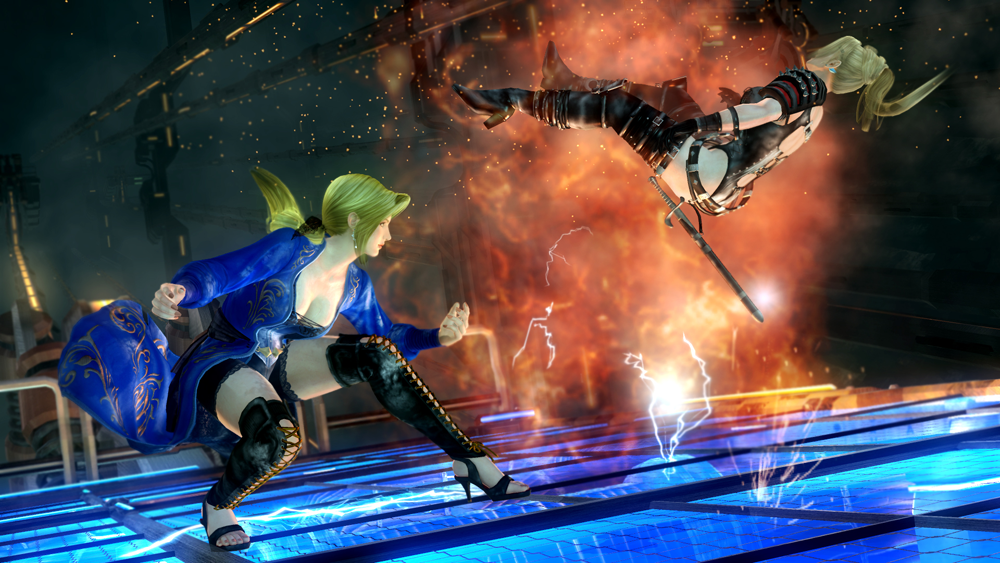What you won’t like
The narrative matrix
Narrative in fighting games is a weird situation. A character’s attitude and motives can some through their visual design, move set, play style, and in-game audio. As kids hanging out at 7-Eleven, when we saw Ken and Ryu, these cues told us that they not only had a relationship but that one was also much more disciplined than the other. We didn’t require a cutscene to make that narrative connection.
Yet a demand exists for these games to spin an epic tale through blunt techniques like cutscenes. In the case of Dead or Alive 5, the narrative isn’t tied to completing a character’s arcade mode and sitting through a cinematic. It’s rather a large, 72-chapter narrative matrix that sporadically jumps from character to character, revealing their relationships to their worlds’ epic crisis.
The story is a stitched together list of fighting game tropes: There’s a fighting tournament that’s a front for biological weapons research. Ninjas are involved. A mega-corporate CEO is the culprit. It peppers a very Japanese style of slap-stick irreverence throughout. Triple crosses and chaos ensues.
I appreciate Team Ninja’s attempt to try something new with the cutscene delivery, but the story feels slap-dash and is constantly leaping from one potentially unrelated plot point to another on a dime. This means changing playstyles as well. If you’re guiding a character you’re uninterested in, the experience drags. When you’re playing a character you enjoy, the sudden jump to another character can be aggravating.
Online mode needs some love
After my interview with Team Ninja, readers pushed me on why I didn’t ask them about fixing their net code. Apparently Dead or Alive 5: Ultimate’s online mode was really bad. Last Round is my first go at the netcode and, well, yeah, it could definitely see some improvements.
Keep in mind, I live in the San Francisco Bay Area and play on a wired connection to my router, which is connected to an average-speed DSL line. I also make sure no one is streaming anything while I play. Not only is this the most basic setup for serious online gaming, but I live in a high-population area of the country that is going to get a lot of regional players online. If you’re running a wireless connection or someone in the house is prone to streaming videos while you’re playing, a superior netcode is not going to save you.
With this setup, I consistently found rooms in the 4-bar range (5 being the highest). Games weren’t optimal, and I wasn’t going to get frame-to-frame accuracy, but they were playable as long as I geared down my personal play mood from “serious business” to “just screwing around” (although no online fighting game should be taken 100 percent seriously).
The worst lag spikes hit whenever someone entered the lobby, which would damn near cripple the speed down to a chug for about 10 seconds.
My other big gripe with online is its unintuitive lobby interface. When you join, it is not visually clear that you’re not in line to play. You’re actually sitting in a sort of upper foyer, with the play lobby sitting one tier lower.
Once in the play lobby, the menu options flutter on and off the screen while spectating. It took a lot of blind button-pressing to figure out how the entire thing worked.
Then there are the instances of trying to search for a rank game or an open lobby and getting stuck behind an infinite game search prompt, with no back out option. I’ve had to soft reboot the PlayStation 4 several times, simply because the system won’t allow a back out, yet it hangs trying to connect.
Xbox One and PlayStation digital copy bugs
Luckily for me, I’ve been playing with the PlayStation 4 retail copy, but Xbox One users are reporting some really screwy bugs, such as the game randomly crashing and Mad Catz peripherals not working properly (which is supposedly an issue on Team Ninja’s end). Digital copies on all systems are also supposedly acting screwy.
Aside from what I mentioned with the connection hang ups, I haven’t experienced anything buggy with my retail PlayStation 4 copy of the game … yet.
Word is that a patch is in the works. Who are we kidding? With today’s new releases, a patch is always in the works.
Conclusion
So after all of this, what sort of person do I picture when they tell me they’re a Dead or Alive player?
Someone that is highly misunderstood.
I’m blown away by how well thought out the base design in Dead or Alive 5: Last Round is. The designers stuck with a traditional, no-thrills, rock/paper/scissor foundation that provides for depth and complexity to evolve on the player’s part. Then they managed to create a comeback mechanic that I can tolerate while creatively finding a way to keep the mind-game momentum rolling through the combo system.
If Team Ninja didn’t change much from Dead or Alive 5: Ultimate to Last Round, I don’t see what about these games would be a turn-off for a big chunk of the fighting game community. Granted, I’m only one man who spent a weekend analyzing the game. Fighting games are complex, requiring hundreds of players playing thousands of matches before revealing their secrets. Maybe it has something there that I just can’t see?
I just think it’s going to be a damned shame if something like Last Round winds up relegated to the fringes of the competitive community again. From my perspective, this game deserves a much larger following.
Score: 90/100
Dead or Alive 5: Last Round is now available for PlayStation 4, Xbox One, Xbox 360 (digital download), and PlayStation 3 (digital download). A PC version is due out on Steam March 30. Koei Tecmo provided GamesBeat with a PlayStation 4 retail release.
VentureBeat's mission is to be a digital town square for technical decision-makers to gain knowledge about transformative enterprise technology and transact. Learn More




